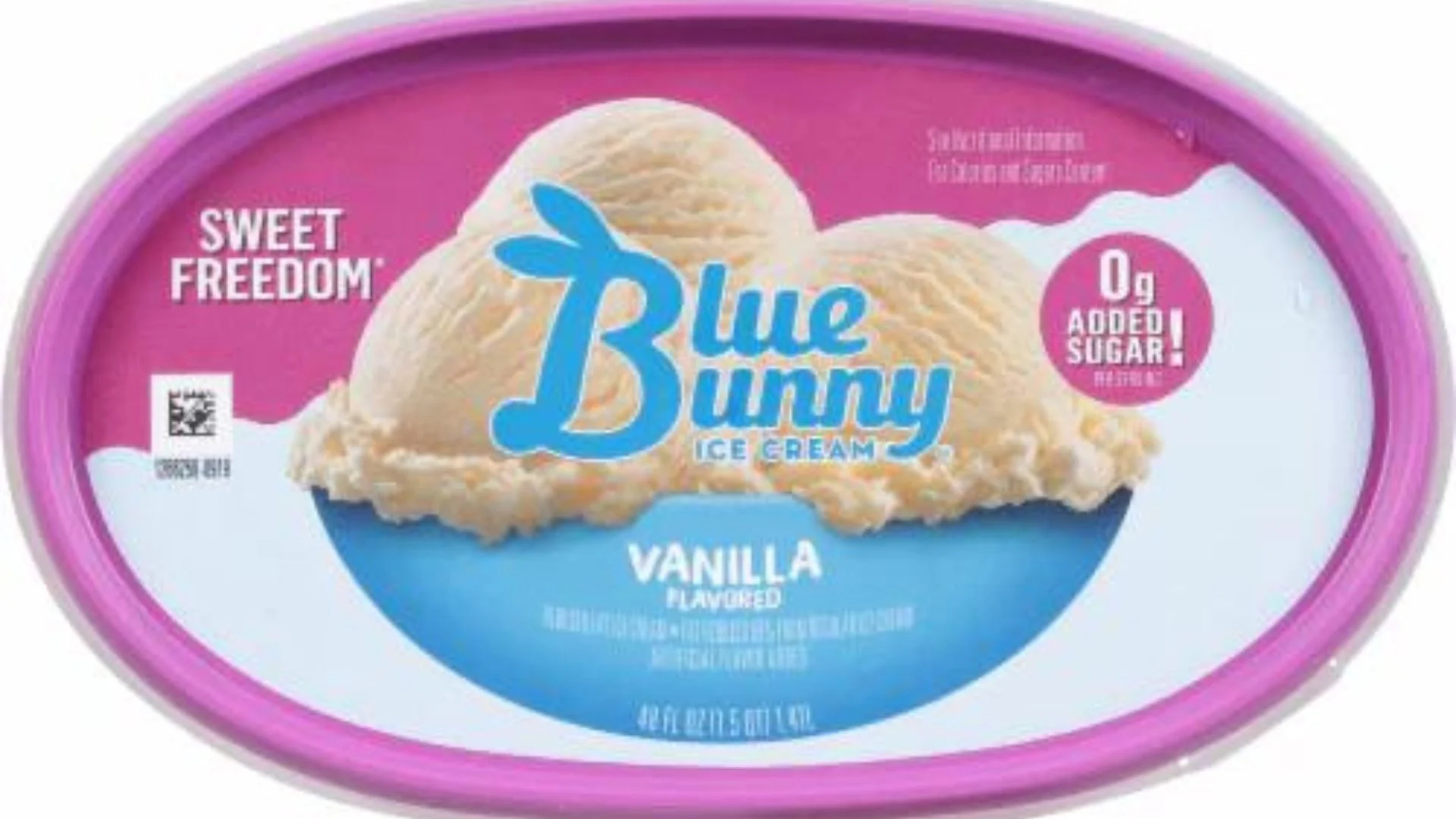In the world of frozen treats, Blue Bunny has long been a household name
standing out with its vibrant packaging and diverse ice cream offerings. However, for those following a gluten-free diet, the brand’s options have historically been limited. As consumers become more health-conscious and increasingly aware of dietary restrictions, the demand for gluten-free ice cream has grown exponentially. This has put Blue Bunny, a brand known for its traditional ice cream flavors,
in a unique position to address the needs of this expanding market.The Blue Bunny Gluten-Free Ice Cream Dilemma
The rise of gluten-free diets can be attributed to a variety of factors, including the increasing prevalence of celiac disease,
as well as a growing awareness of the potential benefits of a gluten-free lifestyle for those with gluten sensitivities or intolerances.
According to the Celiac Disease Foundation, an estimated 1 in 100 people worldwide suffer from celiac disease,
a condition in which the immune system reacts negatively to gluten, a protein found in wheat, barley, and rye.
For individuals with celiac disease or gluten intolerance,
the consumption of gluten-containing products can lead to a range of unpleasant symptoms,
including abdominal pain, bloating, diarrhea, and even long-term health complications.
As a result, the gluten-free movement has gained significant momentum,
with consumers actively seeking out food options that cater to their dietary needs.
In the ice cream industry, this shift in consumer preferences has not gone unnoticed. Brands like Blue Bunny, known for their wide array of classic and innovative flavors,
have faced increasing pressure to expand their gluten-free offerings.
The challenge lies in finding a way to maintain the beloved taste and texture of their traditional ice cream while ensuring that the products are safe for those with gluten sensitivities.
Developing gluten-free ice cream is a complex process that requires careful attention to ingredient selection and production methods. Gluten-free formulations often rely on alternative flours, such as rice, corn, or almond flour,
to replace the gluten-containing wheat flour typically used in standard ice cream recipes. Additionally, manufacturers must ensure that all other ingredients, from stabilizers to flavoring agents, are also gluten-free to prevent cross-contamination.
Blue Bunny’s approach to addressing this challenge has been a collaborative effort,
involving input from both the company’s research and development team and the broader gluten-free community.
By engaging with celiac organizations, dietary experts, and consumers with specific dietary needs,
the brand has been able to gain a deeper understanding of the unique requirements and expectations of the gluten-free market.
One of the key considerations in the development of Blue Bunny’s gluten-free ice cream line has been the issue of taste and texture. Gluten-free formulations can sometimes result in a compromised mouthfeel or a less creamy consistency,
which can be a deterrent for consumers accustomed to the rich, indulgent experience of traditional ice cream.
Blue Bunny has worked tirelessly to strike a balance,
crafting recipes that not only meet the strict gluten-free criteria but also deliver the same level of creaminess and flavor that
their loyal customers have come to expect.
Furthermore, the brand has recognized the importance of variety and choice within the gluten-free ice cream sector. While many consumers may be content with a limited selection of basic flavors,
others seek the same level of innovation and excitement that they would find in the standard ice cream aisle.
Blue Bunny has responded to this demand by expanding its gluten-free lineup,
introducing a diverse range of flavors that cater to a wide array of tastes and preferences.
From classic vanilla and chocolate to more adventurous options like salted caramel and cookie dough,
Blue Bunny’s gluten-free ice cream line aims to provide a satisfying and enjoyable experience for those with dietary restrictions.
- FurthermoreThe Blue Bunny Gluten-Free Ice Cream Dilemma
Furthermore, by offering a broader selection, the brand not only meets the needs of its existing gluten-free customers
but also attracts new consumers who may have previously felt excluded from the indulgence of ice cream. - Additionally: Additionally, by offering a broader selection, the brand not only meets the needs of its existing gluten-free customers
but also attracts new consumers who may have previously felt excluded from the indulgence of ice cream. - Moreover: Moreover, by offering a broader selection, the brand not only meets the needs of its existing gluten-free customers
but also attracts new consumers who may have previously felt excluded from the indulgence of ice cream. - In addition: In addition, by offering a broader selection, the brand not only meets the needs of its existing gluten-free customers
but also attracts new consumers who may have previously felt excluded from the indulgence of ice cream. - Besides: Besides meeting the needs of its existing gluten-free customers, the brand also attracts new consumers
who may have previously felt excluded from the indulgence of ice cream by offering a broader selection.
These transition words help to emphasize the benefits and outcomes of offering a broader selection of gluten-free ice cream,
highlighting both customer satisfaction and market expansion efforts.
The journey towards providing comprehensive gluten-free options has not been without its challenges for Blue Bunny. The company has had to navigate the complexities of ingredient sourcing, production processes,
and regulatory requirements to ensure that its gluten-free products meet the highest standards of quality and safety.
Additionally, the brand has had to educate and inform its customer base about the availability of these new offerings,
addressing any misconceptions or concerns that may arise.The Blue Bunny Gluten-Free Ice Cream Dilemma
Despite these hurdles, Blue Bunny’s commitment to the gluten-free community has been unwavering. The brand has recognized the importance of catering to the diverse dietary needs of its consumers,
and its efforts to expand its gluten-free ice cream lineup have been well-received by those seeking delicious and trustworthy options.The Blue Bunny Gluten-Free Ice Cream Dilemma
As the demand for gluten-free products continues to rise, Blue Bunny’s ability to adapt and innovate will be crucial in maintaining its position as a leading player in the ice cream industry.
By staying attuned to the evolving needs of its customers and continuously refining its gluten-free offerings,
the brand can strengthen its reputation as a trustworthy and inclusive provider of frozen treats for all.
Conclusion
Blue Bunny’s venture into the gluten-free ice cream market represents a significant step forward in the brand’s commitment to inclusivity and accessibility. By recognizing the growing demand for dietary-friendly options,
the company has demonstrated its willingness to adapt and evolve to meet the needs of its diverse customer base.
The development of Blue Bunny’s gluten-free ice cream line has been a complex and multifaceted endeavor, requiring careful attention to ingredient selection, production methods, and customer feedback.
The brand’s collaborative approach, involving input from experts and the gluten-free community,
- Moreover: Moreover, this approach has allowed it to create products that not only adhere to strict dietary requirements but also maintain the rich, creamy taste and texture that ice cream enthusiasts have come to expect.
- Additionally:The Blue Bunny Gluten-Free Ice Cream Dilemma
Additionally, this approach has allowed it to create products that not only adhere to strict dietary requirements but also maintain the rich, creamy taste and texture that ice cream enthusiasts have come to expect. - Furthermore:The Blue Bunny Gluten-Free Ice Cream Dilemma
Furthermore, this approach has allowed it to create products that not only adhere to strict dietary requirements but also maintain the rich, creamy taste and texture that ice cream enthusiasts have come to expect. - In addition: In addition, this approach has allowed it to create products that not only adhere to strict dietary requirements but also maintain the rich, creamy taste and texture that ice cream enthusiasts have come to expect.
- Besides: Besides adhering to strict dietary requirements, this approach has allowed it to create products that maintain the rich, creamy taste and texture that ice cream enthusiasts have come to expect.
These transition words help to emphasize how the brand’s approach ensures both adherence to dietary requirements and the preservation of taste and texture, maintaining coherence and flow in your paragraph.
As the gluten-free movement continues to gain momentum, Blue Bunny’s ability to provide a wider range of options for those with dietary restrictions will be a key factor in its continued success.The Blue Bunny Gluten-Free Ice Cream Dilemma
By offering a diverse selection of flavors and continuously innovating within the gluten-free space,
the brand can solidify its position as a trusted and inclusive provider of frozen treats, catering to the evolving needs and preferences of its customers.
Ultimately, Blue Bunny’s journey into the gluten-free ice cream market represents a larger industry-wide shift towards greater inclusivity and accessibility. As consumers become more conscious of their dietary needs, brands like Blue Bunny that are willing to adapt and cater to these preferences will be well-positioned to thrive in the ever-evolving landscape of the frozen dessert industry.


One Reply to “The Blue Bunny Gluten-Free Ice Cream Dilemma”